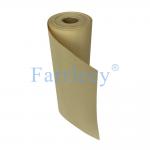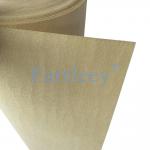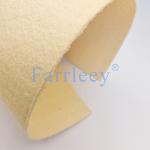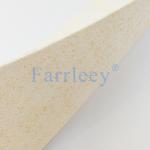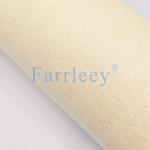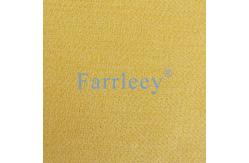High-Performance Aramid Nonwoven Fabric For Cement Kiln Dust
Collection
Aramid nonwoven fabric is an advanced filtration solution widely
used in the dust collection systems of cement kilns, including kiln
head and kiln tail applications. Known for its outstanding
high-temperature resistance, superior strength, and exceptional
filtration efficiency, Aramid nonwoven fabric plays a key role in
capturing harmful dust and gases produced during cement
manufacturing. It ensures compliance with environmental regulations
and significantly improves air quality around cement plants.
Key Features and Benefits of Aramid Nonwoven Fabric for Cement
Kilns:
Superior High-Temperature Resistance: Withstanding temperatures up
to 260°C (500°F), Aramid nonwoven fabric is designed to operate
efficiently in the high-temperature environment of cement kilns,
both at the kiln head (where gases are at their hottest) and the
kiln tail (where gases are still hot but slightly cooler).
Exceptional Strength and Durability: Made from Aramid fibers like
Kevlar and Nomex, the fabric has high tensile strength and tear
resistance, making it ideal for high-velocity gas flows and the
abrasive nature of cement dust. This ensures long-lasting
performance even in the toughest environments.
Effective Dust Filtration: Aramid nonwoven fabric boasts a high
filtration efficiency of over 99% for fine particulate matter
(PM10, PM2.5), which is crucial for reducing harmful emissions and
preventing pollution from cement plants.
Chemical and Abrasion Resistance: The fabric is resistant to the
chemical attacks and abrasive wear common in cement production,
ensuring long-term stability and reliable performance under harsh
operating conditions.
Technical Specifications:
Material: High-performance Aramid fibers (e.g., Nomex, Kevlar)
Temperature Resistance: Up to 260°C (500°F)
Filtration Efficiency: >99% for fine dust and particulate matter
(PM10, PM2.5)
Thickness: 0.3 mm to 1.2 mm, customizable based on specific
filtration requirements
Air Permeability: Ranges from 100 to 500 L/m²/s, depending on
fabric thickness
Surface Treatment: Optional PTFE or ePTFE coatings for enhanced
dust release and performance
Applications in Cement Kiln Dust Collection:
Kiln Head Filtration: At the kiln head, where gases can exceed
200°C, Aramid nonwoven fabric is used to capture fine dust and
particulate matter before the gases are released into the
atmosphere, helping meet emission standards.
Kiln Tail Exhaust Filtration: At the kiln tail, Aramid nonwoven
fabric helps filter out any remaining dust and gases from exhaust,
ensuring cleaner air and a more environmentally friendly cement
production process.
Pollution Control Systems: Aramid nonwoven fabric is commonly used
in baghouse filters and air pollution control systems in cement
plants to ensure effective filtration of dust, smoke, and harmful
particles, reducing the environmental footprint of cement
manufacturing.
Frequently Asked Questions (FAQ):
Q1: Why is Aramid nonwoven fabric ideal for cement kiln
applications?
A1: Aramid nonwoven fabric offers superior high-temperature
resistance, high strength, and outstanding dust filtration
efficiency, making it perfect for the challenging conditions of
cement kilns, where high temperatures and abrasive dust are common.
Q2: How durable is Aramid nonwoven fabric in cement plants?
A2: Aramid nonwoven fabric is highly durable and can withstand
continuous high temperatures and abrasive dust. Its tear resistance
and chemical stability ensure that it performs well over a long
lifespan, reducing maintenance costs and filter replacements.
Q3: How does Aramid nonwoven fabric improve dust filtration in
cement kilns?
A3: The fabric’s high filtration efficiency ensures that fine dust
particles (PM10 and PM2.5) are effectively captured, significantly
reducing emissions and preventing pollution, helping cement plants
comply with environmental standards.
Q4: Can Aramid nonwoven fabric handle the abrasive cement dust?
A4: Yes, Aramid nonwoven fabric is designed to handle the abrasive
nature of cement dust. Its abrasion resistance ensures that the
fabric remains intact and functional even in the most demanding
environments.
